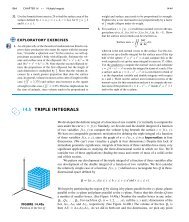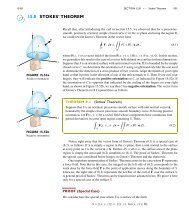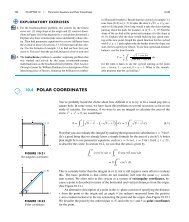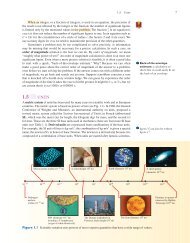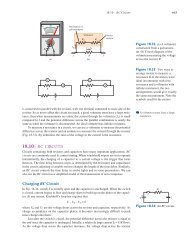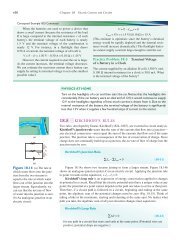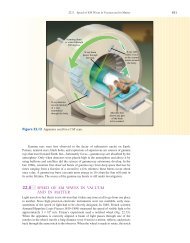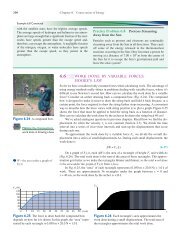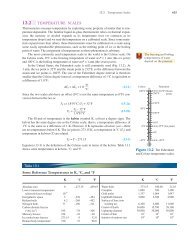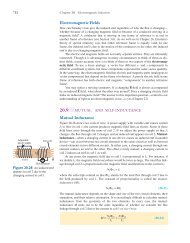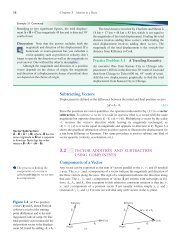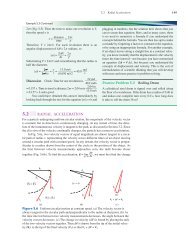Motion of Projectiles
Motion of Projectiles
Motion of Projectiles
Create successful ePaper yourself
Turn your PDF publications into a flip-book with our unique Google optimized e-Paper software.
70 Chapter 3 <strong>Motion</strong> in a Plane<br />
Conceptual Example 3.6<br />
Monkey and Hunter<br />
An inexperienced hunter aims and shoots an arrow<br />
straight at a coconut that is being held by a monkey sitting<br />
in a tree (Fig. 3.22). At the same instant that the<br />
arrow leaves the bow, the monkey drops the coconut.<br />
Neglecting air resistance, does the arrow hit the coconut,<br />
the monkey, or neither?<br />
Strategy and Solution If there were no gravity, the<br />
arrow would fly straight to the monkey and coconut<br />
(along the dashed line from the bow to the monkey on<br />
the branch in Fig. 3.22). Since gravity gives the dropped<br />
coconut and the released arrow the same constant acceleration<br />
downward, they each fall the same vertical distance<br />
below the positions they would have had with no<br />
gravity. The coconut falls as shown by the dashed red<br />
line; the distance fallen at 0.25-s intervals is marked<br />
along a vertical axis. At the same time, the arrow drops<br />
below the blue dashed line by the amounts marked along<br />
its indicated trajectory at 0.25-s intervals.<br />
The arrow ends up hitting the coconut no matter what<br />
the initial velocity <strong>of</strong> the arrow. The higher the velocity <strong>of</strong><br />
the arrow, the sooner they meet and the shorter the vertical<br />
distance that the coconut falls before being hit.<br />
Discussion An experienced hunter would have aimed<br />
above the initial position <strong>of</strong> the coconut to compensate<br />
for the amount his arrow would drop during the time <strong>of</strong><br />
flight; he would have missed the dropping coconut but<br />
might have hit the monkey unless the monkey jumped<br />
down to retrieve the coconut.<br />
Conceptual Practice Problem 3.6 Changes in<br />
Position and Velocity for Consecutive Arrows<br />
An arrow is shot into the air. One second later, a second arrow<br />
is shot with the same initial velocity. While the two are both in<br />
the air, does the difference in their positions (r 2 – r 1 ) stay constant<br />
or does it change with time? Does the difference in their<br />
velocities (v 2 – v 1 ) stay constant or does it change with time?<br />
0.3 m<br />
t = 0 s<br />
t = 0.25 s<br />
1.2 m<br />
t = 0.50 s<br />
2.8 m<br />
t = 0.75 s<br />
1.2 m<br />
2.8 m<br />
0.3 m<br />
t = 0.25 s<br />
t = 0.50 s<br />
t = 0.75 s<br />
4.9 m<br />
t = 1.00 s<br />
Figure 3.22<br />
A monkey drops a coconut at the very instant an arrow is shot toward the coconut. In each quarter second, the coconut and arrow<br />
have fallen the same distance below where their positions would be if there were no gravity.



